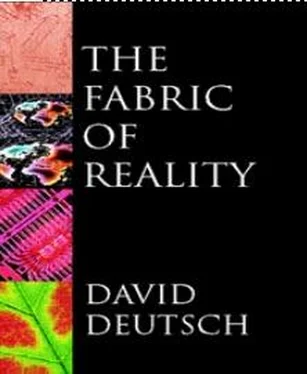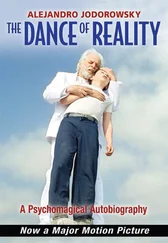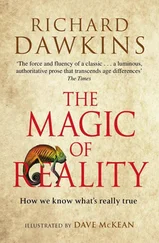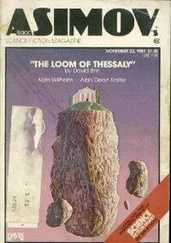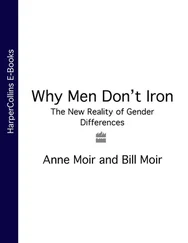David Deutch - The Fabric of Reality
Здесь есть возможность читать онлайн «David Deutch - The Fabric of Reality» весь текст электронной книги совершенно бесплатно (целиком полную версию без сокращений). В некоторых случаях можно слушать аудио, скачать через торрент в формате fb2 и присутствует краткое содержание. ISBN: , Жанр: Физика, Философия, на английском языке. Описание произведения, (предисловие) а так же отзывы посетителей доступны на портале библиотеки ЛибКат.
- Название:The Fabric of Reality
- Автор:
- Жанр:
- Год:неизвестен
- ISBN:0-7139-9061-9
- Рейтинг книги:4 / 5. Голосов: 2
-
Избранное:Добавить в избранное
- Отзывы:
-
Ваша оценка:
- 80
- 1
- 2
- 3
- 4
- 5
The Fabric of Reality: краткое содержание, описание и аннотация
Предлагаем к чтению аннотацию, описание, краткое содержание или предисловие (зависит от того, что написал сам автор книги «The Fabric of Reality»). Если вы не нашли необходимую информацию о книге — напишите в комментариях, мы постараемся отыскать её.
The Fabric of Reality — читать онлайн бесплатно полную книгу (весь текст) целиком
Ниже представлен текст книги, разбитый по страницам. Система сохранения места последней прочитанной страницы, позволяет с удобством читать онлайн бесплатно книгу «The Fabric of Reality», без необходимости каждый раз заново искать на чём Вы остановились. Поставьте закладку, и сможете в любой момент перейти на страницу, на которой закончили чтение.
Интервал:
Закладка:
But there is another side to Galileo’s discovery which is much less often appreciated. The reliability of scientific reasoning is not just an attribute of us, of our knowledge and our relationship with reality. It is also a new fact about physical reality itself, a fact which Galileo expressed in the phrase ‘the Book of Nature is written in mathematical symbols’. As I have said, it is impossible literally to ‘read’ any shred of a theory in nature: that is the inductivist mistake. But what is genuinely out there is evidence, or, more precisely, a reality that will respond with evidence if we interact appropriately with it. Given a shred of a theory, or rather, shreds of several rival theories, the evidence is available out there to enable us to distinguish between them. Anyone can search for it, find it and improve upon it if they take the trouble. They do not need authorization, or initiation, or holy texts. They need only be looking in the right way — with fertile problems and promising theories in mind. This open accessibility, not only of evidence but of the whole mechanism of knowledge acquisition, is a key attribute of Galileo’s conception of reality.
Galileo may have thought this self-evident, but it is not. It is a substantive assertion about what physical reality is like. Logically, reality need not have had this science-friendly property, but it does — and in abundance. Galileo’s universe is saturated with evidence. Copernicus had assembled evidence for his heliocentric theory in Poland. Tycho Brahe had collected his evidence in Denmark, and Kepler had in Germany. And by pointing his telescope at the skies over Italy, Galileo gained greater access to the same evidence. Every part of the Earth’s surface, on every clear night, for billions of years, has been deluged with evidence about the facts and laws of astronomy. For many other sciences evidence has similarly been on display, to be viewed more clearly in modern times by microscopes and other instruments. Where evidence is not already physically present, we can bring it into existence with devices such as lasers and pierced barriers — devices which it is open to anyone, anywhere and at any time, to build. And the evidence will be the same, regardless of who reveals it. The more fundamental a theory is, the more readily available is the evidence that bears upon it (to those who know how to look), not just on Earth but throughout the multiverse.
Thus physical reality is self-similar on several levels: among the stupendous complexities of the universe and multiverse, some patterns are nevertheless endlessly repeated. Earth and Jupiter are in many ways dramatically dissimilar planets, but they both move in ellipses, and they are made of the same set of a hundred or so chemical elements (albeit in different proportions), and so are their parallel-universe counterparts. The evidence that so impressed Galileo and his contemporaries also exists on other planets and in distant galaxies. The evidence being considered at this moment by physicists and astronomers would also have been available a billion years ago, and will still be available a billion years hence. The very existence of general, explanatory theories implies that disparate objects and events are physically alike in some ways. The light reaching us from distant galaxies is, after all, only light, but it looks to us like galaxies. Thus reality contains not only evidence, but also the means (such as our minds, and our artefacts) of understanding it. There are mathematical symbols in physical reality. The fact that it is we who put them there does not make them any less physical. In those symbols — in our planetariums, books, films and computer memories, and in our brains — there are images of physical reality at large, images not just of the appearance of objects, but of the structure of reality. There are laws and explanations, reductive and emergent. There are descriptions and explanations of the Big Bang and of subnuclear particles and processes; there are mathematical abstractions; fiction; art; morality; shadow photons; parallel universes. To the extent that these symbols, images and theories are true — that is, they resemble in appropriate respects the concrete or abstract things they refer to — their existence gives reality a new sort of self-similarity, the self-similarity we call knowledge.
heliocentric theoryThe theory that the Earth moves round the Sun, and spins on its own axis.
geocentric theoryThe theory that the Earth is at rest and other astronomical bodies move around it.
realismThe theory that an external physical universe exists objectively and affects us through our senses.
Occam’s razor(My formulation) Do not complicate explanations beyond necessity, because if you do, the unnecessary complications themselves will remain unexplained.
Dr Johnson’s criterion(My formulation) If it can kick back, it exists. A more elaborate version is: If, according to the simplest explanation, an entity is complex and autonomous, then that entity is real.
self-similaritySome parts of physical reality (such as symbols, pictures or human thoughts) resemble other parts. The resemblance may be concrete, as when the images in a planetarium resemble the night sky; more importantly, it may be abstract, as when a statement in quantum theory printed in a book correctly explains an aspect of the structure of the multiverse. (Some readers may be familiar with the geometry of fractals; the notion of self-similarity defined here is much broader than the one used in that field.)
complexity theoryThe branch of computer science concerned with what resources (such as time, memory capacity or energy) are required to perform given classes of computations.
Although solipsism and related doctrines are logically self-consistent, they can be comprehensively refuted simply by taking them seriously as explanations. Although they all claim to be simplified world-views, such an analysis shows them to be indefensible over-elaborations of realism. Real entities behave in a complex and autonomous way, which can be taken as the criterion for reality: if something ‘kicks back’, it exists. Scientific reasoning, which uses observation not as a basis for extrapolation but to distinguish between otherwise equally good explanations, can give us genuine knowledge about reality.
Thus science and other forms of knowledge are made possible by a special self-similarity property of the physical world. Yet it was not physicists who first recognized and studied this property: it was mathematicians and computer theorists, and they called it the universality of computation. The theory of computation is our third strand.
5
Virtual Reality
The theory of computation has traditionally been studied almost entirely in the abstract, as a topic in pure mathematics. This is to miss the point of it. Computers are physical objects, and computations are physical processes. What computers can or cannot compute is determined by the laws of physics alone, and not by pure mathematics. One of the most important concepts of the theory of computation is universality. A universal computer is usually defined as an abstract machine that can mimic the computations of any other abstract machine in a certain well-defined class. However, the significance of universality lies in the fact that universal computers, or at least good approximations to them, can actually be built, and can be used to compute not just each other’s behaviour but the behaviour of interesting physical and abstract entities. The fact that this is possible is part of the self-similarity of physical reality that I mentioned in the previous chapter.
Читать дальшеИнтервал:
Закладка:
Похожие книги на «The Fabric of Reality»
Представляем Вашему вниманию похожие книги на «The Fabric of Reality» списком для выбора. Мы отобрали схожую по названию и смыслу литературу в надежде предоставить читателям больше вариантов отыскать новые, интересные, ещё непрочитанные произведения.
Обсуждение, отзывы о книге «The Fabric of Reality» и просто собственные мнения читателей. Оставьте ваши комментарии, напишите, что Вы думаете о произведении, его смысле или главных героях. Укажите что конкретно понравилось, а что нет, и почему Вы так считаете.
